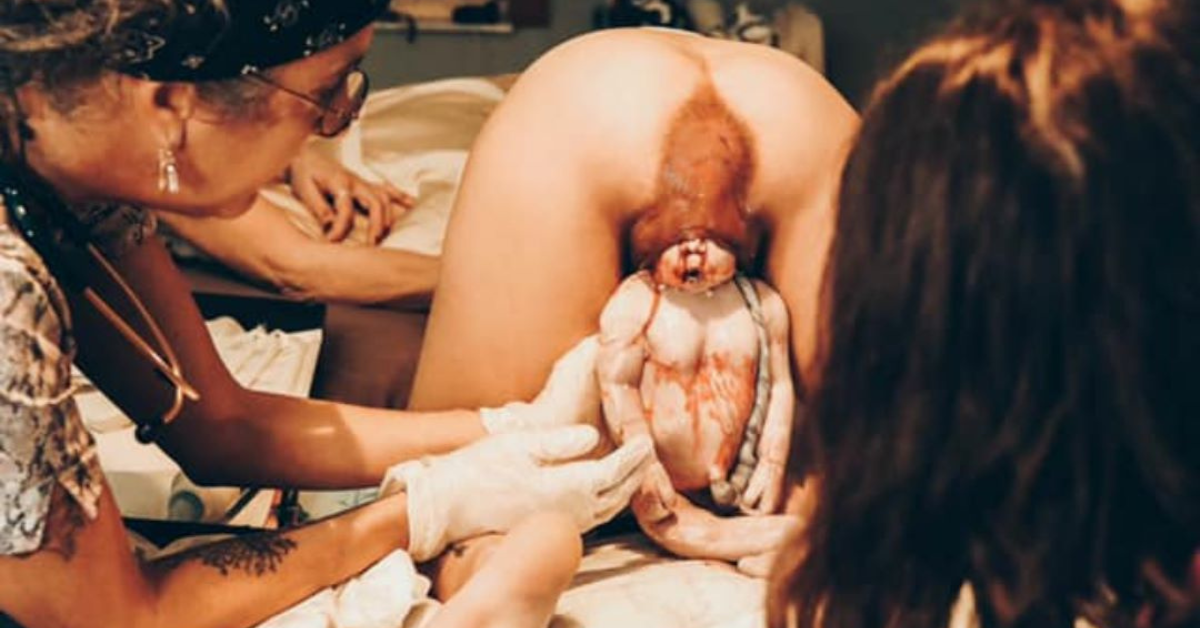What happens when you choose to have your baby in the hospital? The specific answers to this question depend on whether you are sent there for induction or are arriving in labor. It also depends on your planned mode of birth – vaginal or cesarean. We will talk about planned vaginal birth in this article.
Know what you’re signing for
If you arrive at the hospital for a planned induction, you will be registered for your stay, then sent to the L&D unit to check in. If they have an available room for you, you will be admitted to that room, given a hospital gown to change into and asked to leave a urine specimen in a cup. A nurse will then come in and hand you a clipboard with a stack of papers to sign. Most of them are consent forms and she has likely perfected a quick synopsis of each form. You aren’t encouraged or discouraged from reading them thoroughly, and she will answer your questions. However, this part of the intake usually goes pretty quickly – if you get my drift. The forms include consent to treat for vaginal or cesarean birth, consent for blood products, consent for Vitamin K, eye ointment, (maybe Hepatitis B vaccine, circumcision for boys, and a new eye exam that includes dilating the baby’s eye and holding it open with a metal cup). Your provider is really the one who should be giving you the risks and benefits of each intervention that you are signing for, but in reality that almost never happens.
Triage and cervical checks
If you are in active labor, unless the baby is imminently coming, you will be processed through the labor triage room where you will be given a gown and asked to leave a urine sample and get hooked up to the monitors to determine your labor pattern. Then one of the nurses (or your provider if available) will do a cervical check to see if you are at least 4 – 6 cm. You will stay depending on your contraction pattern and your cervical dilation. If your contractions are not frequent enough or lasting long enough or too long, and your dilation isn’t at least 6, you may get an ultrasound and then (if everything is good on the ultrasound) sent home. This may happen several times before you are finally admitted in labor. It is not a bad idea to stay home as long as you feel safe before going to the hospital to avoid being sent home multiple times.
When you arrive in labor, whether breathing through your contractions or feeling like pushing, the above- mentioned forms still have to be signed once you are admitted – by you, the ‘patient’. If the baby is coming and you absolutely can’t sign, they will give them to you after. You get the idea.
So what happens when you’re admitted?
From here on out, whether induction or active labor, everything is basically the same. After the forms, they will come in with all of the IV equipment to start your IV and draw blood. Everyone gets an IV unless you make prior arrangements with your provider, and most providers prefer you to have the IV. You are also then hooked up to the monitor with a toco that documents the timing of your contractions and an US that displays the baby’s heartbeat.
Things you need to know
Now you are basically tied down with 2 monitor wires and an IV line which makes it difficult to get out of the bed or even change positions. Unfortunately, this goes against one of the main aspects of efficient labor – that of free movement. Even L&D nurses are getting hip to Spinning Babies – a system of postures and movement that help the baby shift into the best relationship to the mother’s pelvis for a smooth birth.
You will likely have a cervical check once you’re all settled in, and you may or may not be asked for your permission. If you are not already 6 cm or do not achieve 6 cm within a couple of hours, the provider will likely want to start pitocin to speed things up. Again, you may or may not be asked permission for this.
Induction process
If you are there to be induced, sometimes they start with a cervical ripening agent. In south Florida, most providers use Cervidil which is a tampon-like insert that stays in the vagina for 12 hours. Some still use Cytotec which is ¼ of a pill that is less predictable than Cervidil and can cause strong contractions that come too frequently. It has been associated with fetal intolerance and uterine rupture. You have a right to decline this. Two hours after the Cervidil is finished and taken out, they will want to start the Pitocin and break your water bag.
Here comes the epidural
Once things get rolling, if you choose to get an epidural, the anesthesiologist or Registered Nurse anesthetist will come in to evaluate you, give you the risks and benefits of the procedure and forms to sign. If you are a good candidate for the procedure, they will ask everyone to leave the room, prep and drape you and place the epidural catheter. Afterwards, they lay you flat in the bed for about 20 minutes and then you will be able to sit up and turn side to side with help, but will no longer be allowed out of the bed.
It is not impossible to do some of the Spinning Babies postures while tied to the bed or with an epidural, but it is much harder and requires a dedicated doula or very motivated nurse to accomplish them.
Once you become fully dilated you may be asked to start pushing, even if you don’t feel ready. Alternatively, if your baby is high and you don’t have a strong urge to push (or have an epidural and can’t feel that urge) you may be allowed to ‘labor down’. This refers to the process of allowing the labor contractions to bring the baby’s head down through the birth canal so that the pushing phase can be much shorter.
Let’s talk pushing + birth
Pushing in the hospital is typically more like an athletic event with everyone yelling at you to “PUUUUSH” and instructing you to hold your breath while you push for a count of 10. You will likely have your knees up in the air with someone helping you hold your legs back. There is a definite air of adrenaline inspired action and rush to get the baby out at this point. Once the head is born, you will be told to push again to effect birth of the body and the baby may or may not be placed on your belly. Typically the cord is cut shortly thereafter and then the baby is taken to the warmer to be stimulated and dried and “eyes and thighs” (eye ointment and Vitamin K shot) are done. The baby will then be swaddled in a receiving blanket and handed to you. Some L&Ds are supporting skin to skin with the parents and may not wrap the baby up before giving him back to you.
That is a typical hospital labor and delivery scenario. There may be individual providers that do things slightly differently, but for the most part this is the way we do it in America.
Evidence Based Birth
In general, you are not asked permission for any of the procedures and interventions that are performed in the hospital. The general idea being that you have presented yourself there so you must be ok with whatever they feel is appropriate. The truth is that most of what is done in the hospital is NOT evidence based and you would significantly benefit from educating yourself on the different possible interventions (ask your provider what the typical birth scenario looks like to her). A web resource such as Evidence Based Birth is invaluable for expecting parents whether they’ve had a baby in the hospital or are expecting their first.
Interventions
Another trend that I’ve witnessed is the trove of interventions that are performed on the newborn – especially if she is a premie. Our hospitals and hospital providers are making A LOT of money off the backs of our most precious and fragile resource – the next generation of human beings, who cannot speak for themselves. Please educate yourselves as parents and protect your little ones from these unnecessary interventions!
*As a nurse midwife who worked in the hospital Labor and Delivery units from 2005 – 2014, both as a Labor and Delivery nurse and as a CNM, I have had a substantial amount of experience seeing thousands of women and families come through to experience the birth of their babies. Since 2008, I have worked in my own home birth practice where we have periodic exposure to the hospital L&Ds with the clients that we transfer in for one reason or another. I have not seen many substantial changes happening for the process of hospital birth, other than perhaps a nod to the delayed cord clamping movement with a reluctant delay of a minute or two or milking of the cord in some cesareans (which is now thought to contribute to brain bleeds and not such a good idea). The only real change that has occurred has been the elimination of the regular newborn nursery, and this seems to have resulted in a greater number of babies being sent to the NICU – negating the potential positive outcome of having less babies experiencing separation from their parents.





